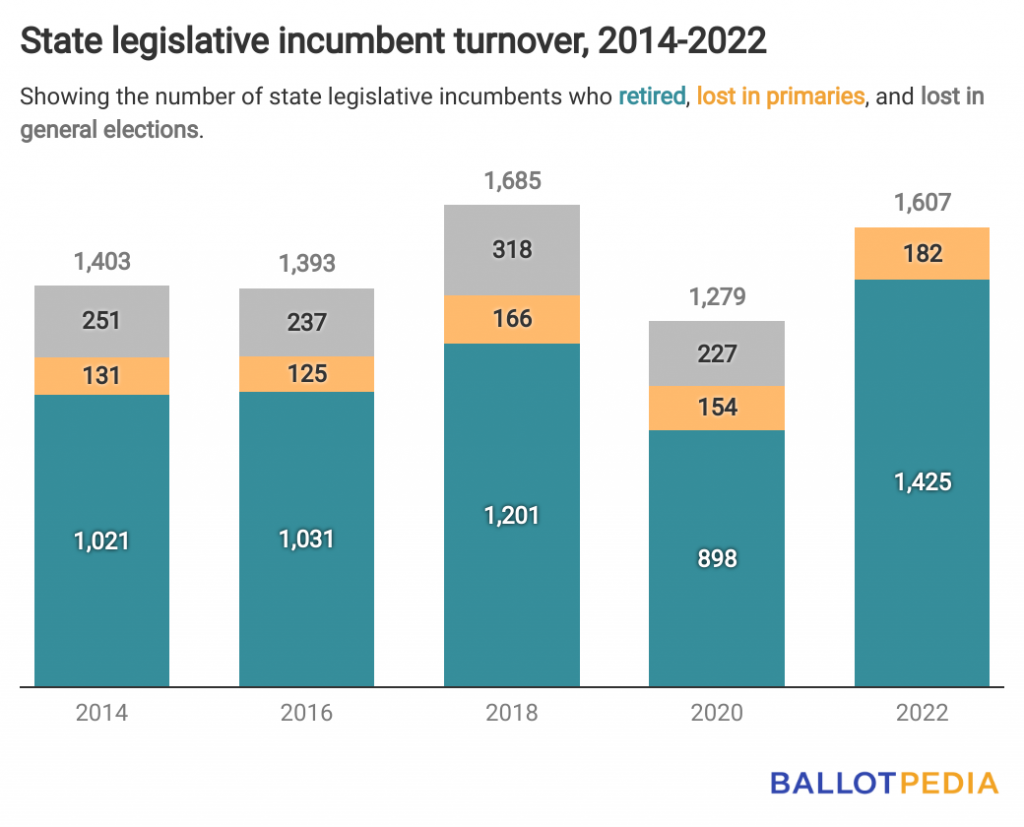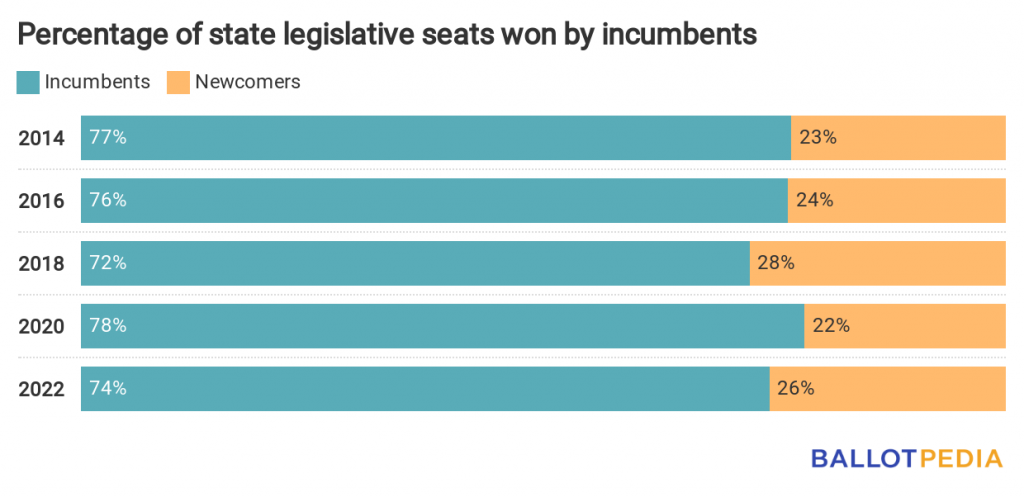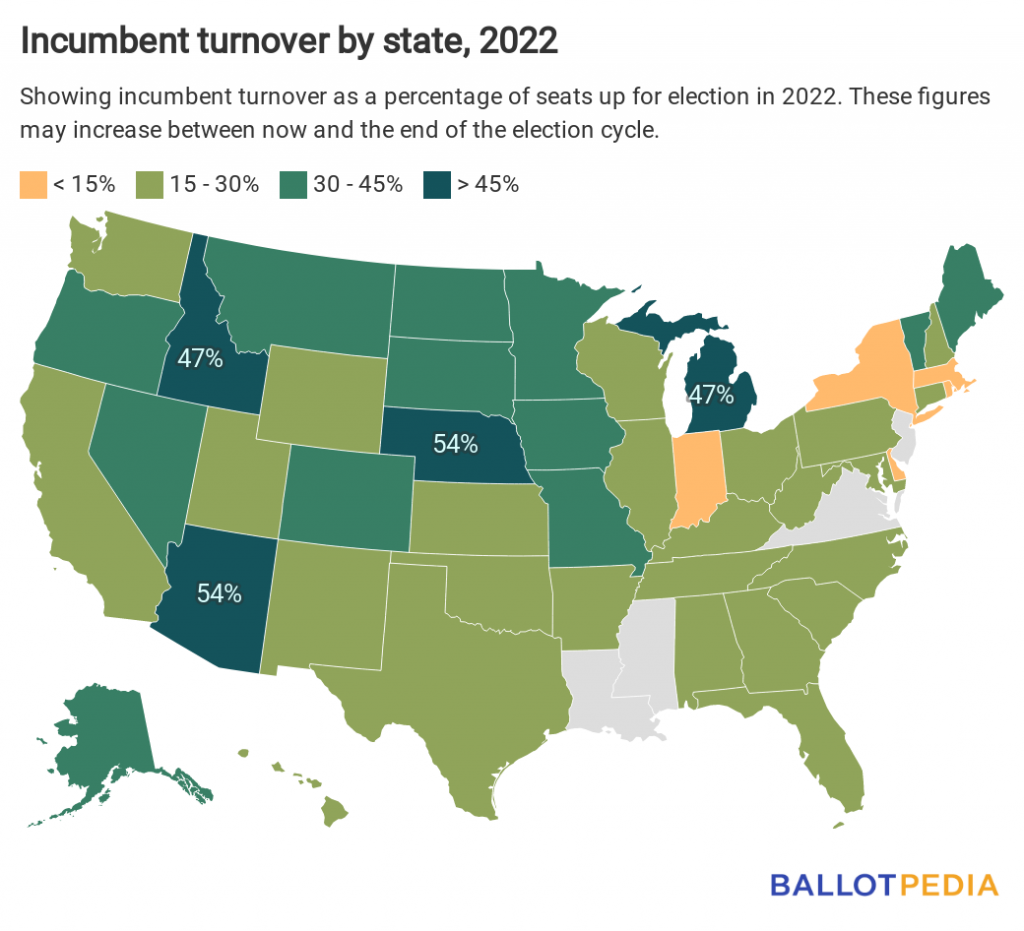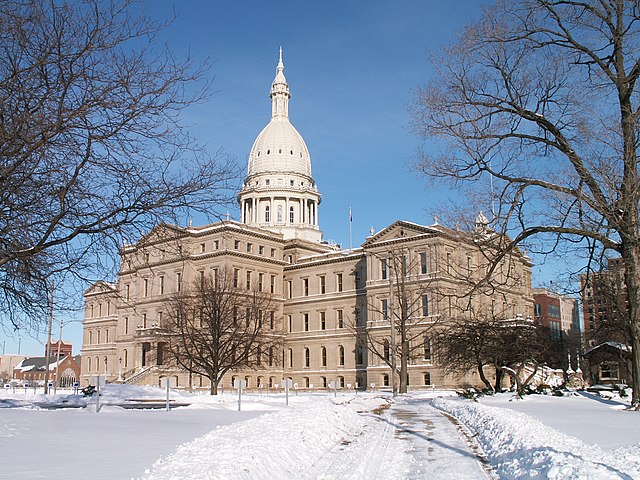At least 1,607 incumbents will not be returning to their seats next year, representing an increase compared to recent election cycles, one that will alter the makeup of legislatures across the country.
Ballotpedia uses a metric called "incumbent turnover" to determine how many incumbents are leaving office. This important figure tells us how many incumbents remained in office at the end of the cycle and how many newcomers will be entering office.
Historically, most incumbent turnover doesn't happen at the ballot box, but rather through retirements. That broad term covers incumbents who leave office by any means apart from losing an election, meaning things like stepping away from office, term limits, and disqualifications.
Election defeats—both in primaries and general elections—make up the rest of the turnover figures.
Eight states have yet to hold primaries and we are still months away from the general elections, but the incumbent turnover in 2022 so far is greater than the total turnover in 2014, 2016, and 2020.
Only the 2018 election cycle had more turnover than where we are right now in 2022, but that will likely change by the end of the current election cycle.

The number of state legislative seats up for election changes every cycle, which can affect the raw numbers when it comes to turnover. There are 6,278 seats up for election this year, the largest number compared to recent cycles.
But even when taken as a percentage, the turnover figures in 2022 so far show that newcomers will hold at least 26% of the state legislative seats up for election and that's assuming that every incumbent wins their general election in November, which is unlikely.

Incumbent turnover will have a varying effect across different states. For example, Delaware currently has the lowest turnover rate at 11% of the seats up for election. Indiana, New York, Massachusetts, and Rhode Island also have low turnover rates presently, though, apart from Indiana, these states have not yet finished their primary elections.
At the high end, in Arizona and Nebraska, newcomers are guaranteed to win over half of the seats up for election. Michigan and Idaho also have some of the highest turnover rates.
The reason for these high turnover rates vary. Nebraska's came entirely from retirements, with 12 incumbents leaving office, 10 of whom were term-limited. Arizona and Michigan had a large number of retirements and increased rates of incumbents defeated in primaries. And in Idaho, 18 incumbents lost to primary challengers—the largest number among any state so far—which contributed to its high turnover rate.

Ballotpedia will continue to track incumbent turnover throughout and at the end of the election cycle. Regardless of the outcome in November, the increased turnover rates so far guarantee that the make-up of state legislatures will look very different come 2023.


